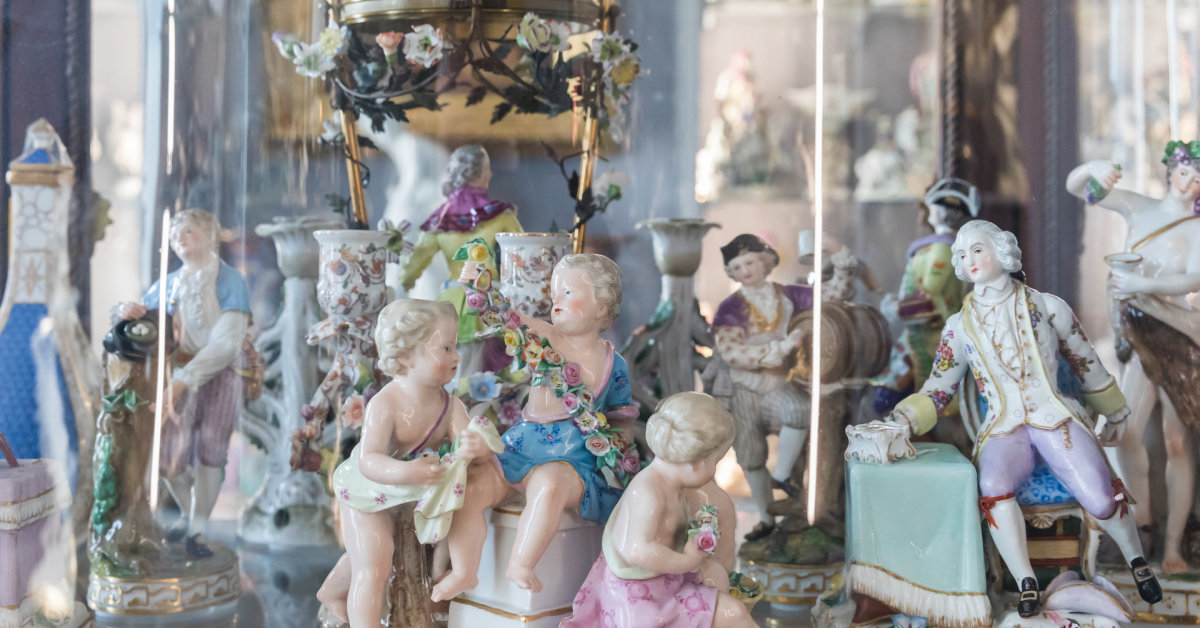
[ad_1]
“We open the artistic values collected by the family for twenty years to the residents and guests of Lithuania. We believe that this gallery will become one more tourist attraction and a new space for discussion about art, beauty and aesthetics ”, says one of the gallery’s founders, Virmantas Puidokas. According to him, the idea of establishing the first porcelain gallery in Lithuania crystallized during the pandemic. “The global pandemic has made it clear that human needs cannot be seen in a primitive way, they only need food, warmth and sleep. We have clearly seen that there is a cultural hunger, so we decided to open our collection to the public,” says V. Puidokas.
In addition to porcelain, the exhibition shows the 19th century. Napoleon III style furniture, painted shop windows, handcrafted oak cabinets and rich 19th and 20th century furnishings. an exhibition of classical works of art. According to the gallery founders, the entrance fee to visit the gallery will be symbolic and suitable for large families. For these reasons, the porcelain gallery should be attractive to tourists traveling in Lithuania.
“People have different needs, so we wanted to combine in one place what would be interesting for both men and women and children. The nearby aviation museum would be more popular with those interested in technology and innovations, and the porcelain gallery is more popular with fans of beauty, art and aesthetics, ”says Irena Puidokienė, one of the founders. from the gallery.
According to the collector, he brought a penchant for fragile art since childhood: the first porcelain figurine in his collection, which came from his parents’ home, is the most expensive. “This hobby overwhelmed me, at first I bought figurines in the markets of Lithuania, then during trips abroad, and now in online auctions”, admits the collector.
His desire to buy a porcelain figurine of the ruler of Lithuania and Poland, the founder of the Meison factory, August II (Strong) on horseback, which collectors consider a rarity. According to I. Puidokienė, each porcelain product has its own history, often works of art that have existed for several hundred years also take hold of the spirit of the former owners. “For those who are interested in the production and history of porcelain, we intend to organize tours of the exhibition with a guide who can get acquainted with the secrets of the art of fragile and aesthetic porcelain,” says I.Puidokienė .
Porcelain called “white gold” is believed to have been first produced in China. Some historians believe that porcelain originated in the Shang dynasty in the 9th-16th centuries. pr. I, others, than in the 6th century AD, during the Ming dynasty (1368-1644). Although the secrets of porcelain production were carefully guarded, they are still believed to have been stolen, leading to the spread of hard porcelain in the 15th century. production began in Japan and then Korea.
The porcelain was brought to Europe by the traveler Mark Paul (1254-1324). He in 1295. A small white vase was brought to Europe, which is stored in St. Treasury of St. Mark’s Cathedral in Venice. By the way, Mark Paul is also the inventor of the word “porcelain” – in Italian “porcella” – a sink.
[ad_2]